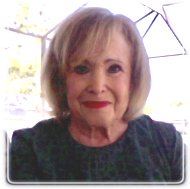 April 26, 2018, saw the actualization of a project that was started in 2010. This project is The National Memorial for Peace and Justice which was erected in Montgomery, Alabama.
April 26, 2018, saw the actualization of a project that was started in 2010. This project is The National Memorial for Peace and Justice which was erected in Montgomery, Alabama.
The name of the landmark, alone, would not prepare a visitor for the experience of being guided through the reality of the history of slavery in the South. The core of the exhibit consists of 800 steel columns that represent each county in the American south that turned a blind eye to the terrors that accompanied mob lynching.
Each column, in turn, is engraved with the names of individuals who were the targets of this terror. Not all of the names could be salvaged. These names are represented by “unknown” on the markers.
A goal of the Memorial is the acknowledgment of this part the Nation’s history. It is understood, in psychological terms, that that which is not addressed cannot be healed.
The reality of the lives of newly freed slaves (for the most part) was tracked from 1882 to 1930. Lynching was not confined to the South. The white men are reported to have feared retribution for their behavior toward the now-freed slaves. There was a widespread belief that African Americans exhibited a sexual prowess unknown to the white men. The fear of being humiliated by the newly liberated black men, at work, and at home, is largely the reason behind the hatred toward the African American population
Lynchings occurred in all parts of the country and were also aimed at Mexicans and Native Americans. The greatest concentration of these murders on this population lies within the southern states.
Before the Civil War, the largest number of African Americans were slaves. A landowner included the number of slaves he owned as part of his wealth. A slave was required to perform tasks that others avoided. They were useful and valuable. Slaves were beaten, raped, and maimed, but, usually, not killed. After the Civil War, perceptions changed.
Freed black men were seen as competitors for jobs, space and white women. One of the oft-repeated excuses for the lynchings was that they were necessary to protect innocent white women. In 1922 Parks Banks was lynched in Mississippi for carrying a picture of a white woman in his pocket.
A lynching is accompanied by a mob mentality. It has been posited that a phenomenon called “deindividuation” occurs in certain group settings. Participants merge with the mood of the crowd. As the tenor of the moment builds, as the size of the crowd grows, feelings of self-responsibility are discarded. The event is viewed as a group action rather than the actions of a distinct group of individuals.
When the subject of this violence was someone from outside the group; someone with perceived lower social status; likely, someone without financial stability the intensity increased and inhibitions regarding violence were set aside. Man or woman, such an individual would usually have no defenders in the crowd. No champions to call out the barbarism for what it was.
Mary Turner, 1918, Lowndes County, Georgia. Mary, eight months pregnant and a mother of two, protested the lynching of her husband the previous day. The audacity of her belief that she was entitled to object so outraged the white mob that they dragged her to Folsom Bridge, doused her with gasoline and set her on fire. Then, the crowd slit open her pregnant belly and allowed her unborn child to perish in the flames.
The research on the physical effects of terror on the perpetrator has compared humans to dogs. The hair on the back of a dog’s neck stands up when the dog feels threatened and is about to go in for the kill. Ethnologist, Konrad Lorenz, concluded that humans in a mob situation experience what he has called a “holy shiver”, a tingling of the spine that accompanies a violent act. There is a feeling of unity and absolute righteousness. If the assassins are in accord with their belief that such an act is justified, is transmitted throughout the group as it grows in magnitude.
The immutable beliefs held by white southerners led to the Great Migration that occurred between 1910 and 1970. The contempt for African Americans embodied in the Jim Crow laws encouraged this group to leave the South altogether. With the forced separation of the races in public places, inferior schools and housing, 6 million individuals headed North.
The departure from the South was painful. Generations of African Americans lived in the rural South. It is hypothesized that even if “home” has its drawbacks, It is still “home” The industrial, urban environment was foreign and intimidating to this largely rural population.
Many of the issues they encountered remain unresolved to the present time. The mass incarceration of African American men is the challenge that is being discussed today.
Anthony Ray Hinton was incarcerated for two murders he did not commit. Despite the truthful, easily understood evidence of his innocence, it took 16 years for Mr. Hinton to be released from jail.
The case was argued all the way to the Supreme Court.
The man behind the Memorial, Bryan Stevenson, is a founder of the Equal Justice Initiative. This is the group that secured Mr. Hinton’s freedom.
Mr. Stevenson believes in redemption for all. The concept of redemption is encountered in places of worship, courts of law, and in political settings. The belief in forgiveness for sin is a cornerstone of life in the 21st century.
First, the deed must be acknowledged. Second, the offender must regret and apologize. Finally, in an ideal situation, said individual will be forgiven. This is a philosophy of hope. The metaphorical door is not closed and padlocked.
The Memorial For Peace & Justice looks ahead as well as behind. Near the exit, overlooking a square that was notorious as the slave auction block is a kiosk that provides voter information.
About the Author

Ruth Gordon
, MA/MSW/LCSWI bring with me +30 years of experience as a clinician. My Masters degrees are from: Assumption College, Worcester, MA, Master of Arts in Psychology & Counseling/ and Boston University School of Social Work, Boston, MA, an MSW in Clinical Social Work. This is the 11th year I have written a monthly newsletter that is sent to approximately 500 individuals. The archive can be found on my website, www.foreverfabulousyou.com.
Office Location:
The OC Building, 11983 Tamiami Trail, N., Naples, FL 34110
Naples, Florida
34110
United States
Phone: 239 293-4314
Contact Ruth Gordon
Professional Website:
www.foreverfabulousyou.com